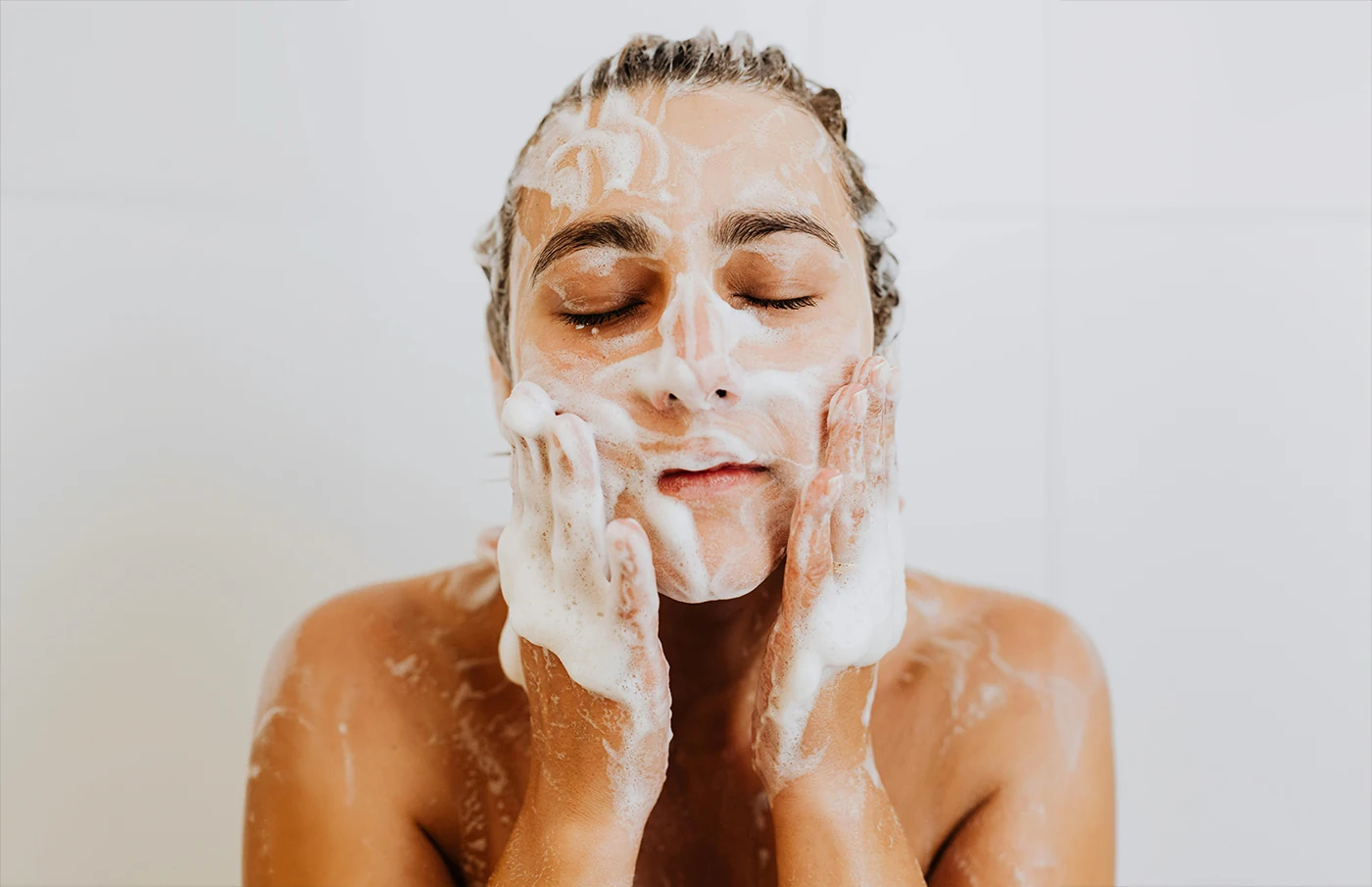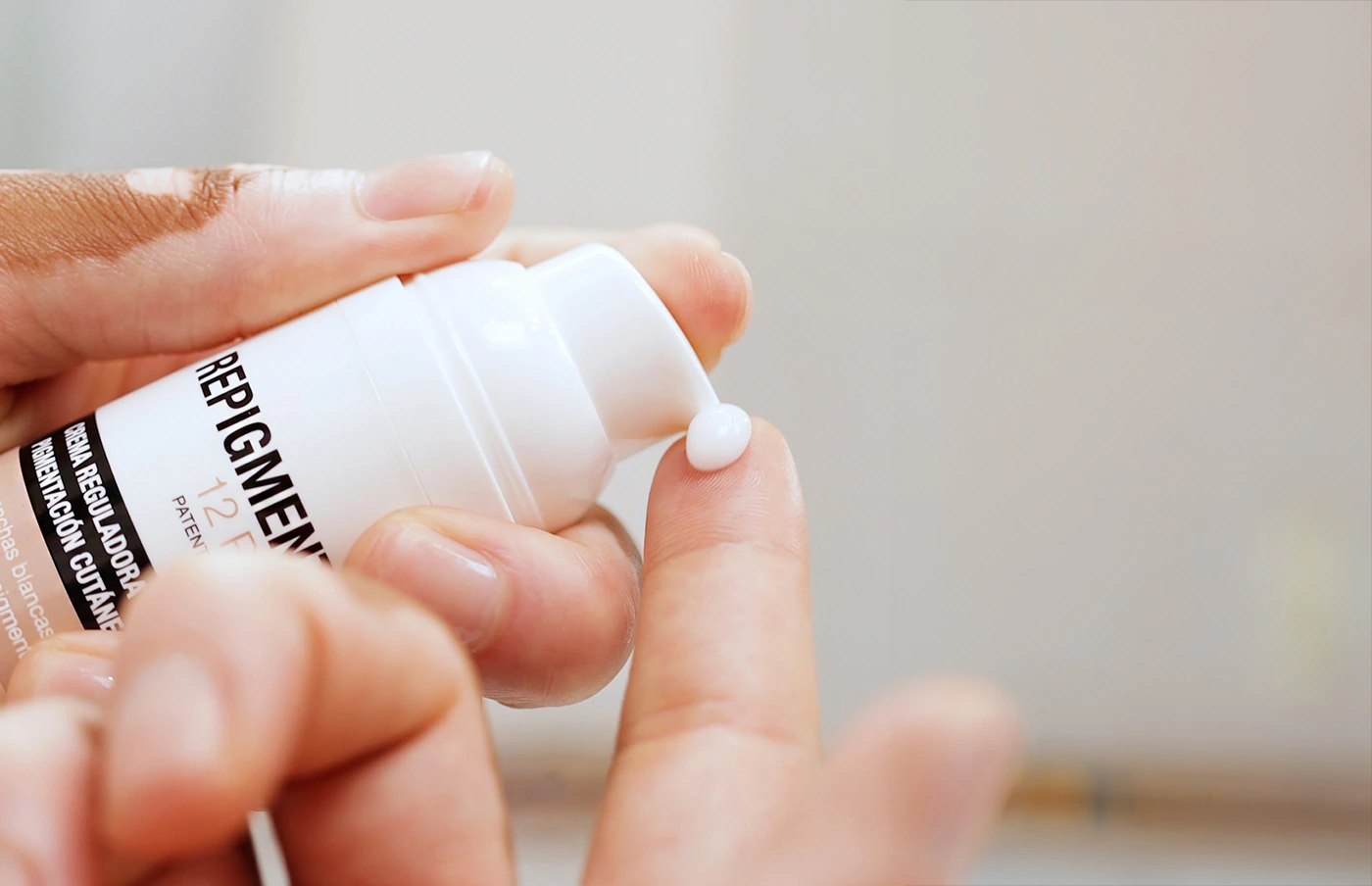White Patches Routine
White patches on the skin, caused by a reduction in melanocytes, can be improved with a daily routine that includes specific products that stimulate melanin production and controlled sun exposure, always with adequate sun protection. This approach helps to restore an even tone and visibly improves the appearance of the skin.
1
Cleanse
2
Treat
3
Stimulate
4
Protect


1Cleanse
Before starting your routine, ensure that the skin is clean and free of residue from other products. This not only optimises the absorption of the active ingredients you will apply next, but also allows the treatments to act more effectively on areas with loss of pigmentation.
Proper facial hygiene is key to the health and balance of the skin, as it removes impurities, pollutants and remnants of products such as sunscreens or makeup, which can interfere with the correct absorption of your cosmetic treatment.
Therefore, cleansing prior to applying any cosmetic treatment is an essential step, especially in a routine designed to help you recover your skin's natural tone, promoting an even tone and skin recovery.
2Treat
Repigment12 Plus is your best ally for treating white patches: it helps to prevent their appearance and promotes the recovery of your skin's natural tone.
To maximise results, apply the treatment in the morning and at night directly on the white patches, ensuring that it covers both the inside of the patch and the area surrounding it, where pigmentation is still visible. Leave it to act for 40 to 60 minutes before applying other cosmetics or cleansing the treated area.
This treatment has excellent skin and eye tolerance, making it a safe option for sensitive skin, even for delicate areas such as the area around the eyes or the eyelids.




3Stimulate
It is important to accompany the treatment with daily exposure to sunlight. With this guideline, you will promote the reproduction and mobility of melanocytes from areas where pigment still exists to areas with white patches, thus helping to restore normal pigment levels in the skin.
Make sure you perform this step consistently and daily throughout the cosmetic treatment schedule to achieve optimal results. Remember to always avoid burns, so it is advisable to start with very few minutes of exposure.
4Protect
As the last step of your cosmetic treatment to help regulate the pigmentation of the white patches on your skin, you can apply Repigment Sunscreen with MelitaneTM, an active ingredient that enhances and accelerates natural tanning, reducing sun exposure times.
This sunscreen protects the skin from burns and other undesirable effects, while allowing UV rays to penetrate and stimulate melanocytes, as it does not contain physical filters and also increases the skin's vitamin D levels to strengthen it and improve results with Repigment12 Plus.


Complete your beauty ritual


Book an appointment with one of our Skin Experts Book an exclusive slot just for you, from the comfort of your own home.
During this free 30-minute video call, you can receive answers to all your questions and discover the best skincare advice. Together with your Skin Expert, you will personalise every step of your beauty routine. Shall we get started?


